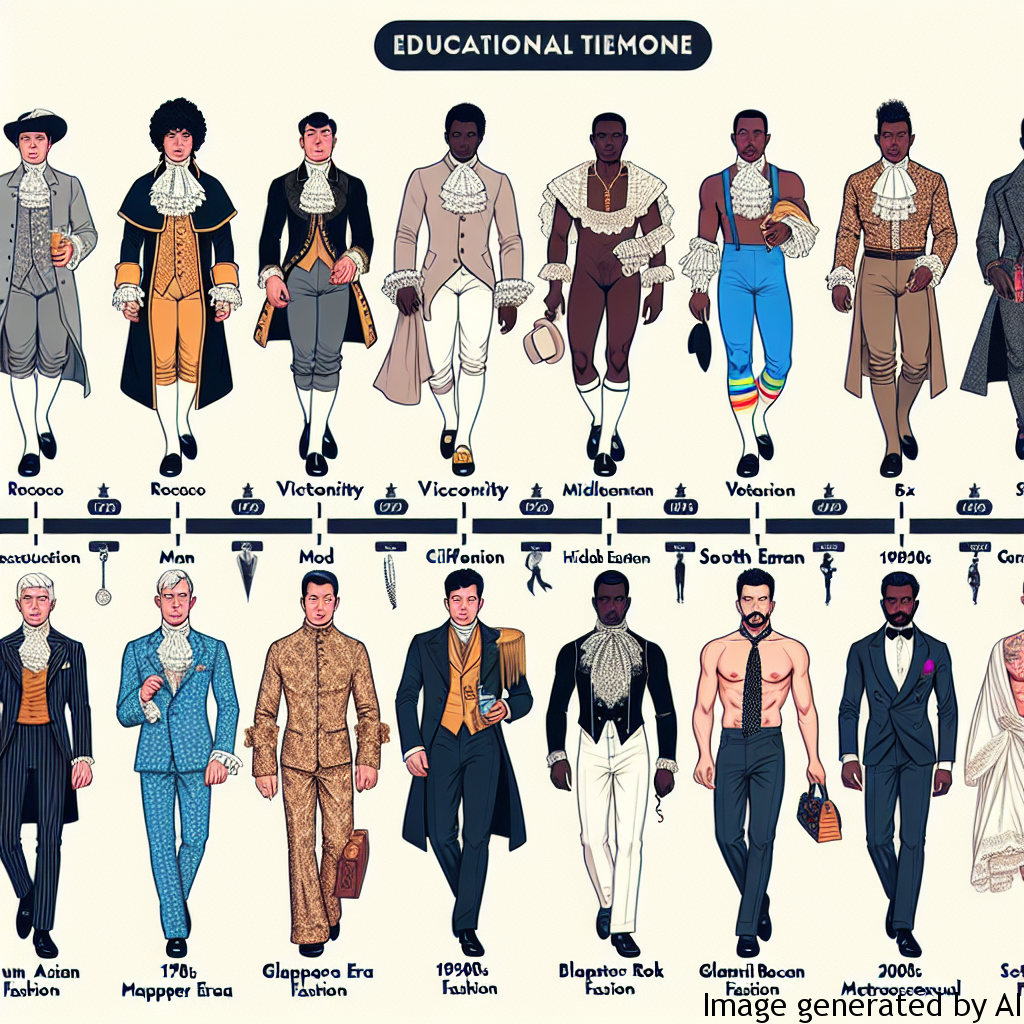Introduction
Through the ages, men’s fashion has always played a subtle yet significant role in the expression of male sexuality and in defining gender expectations. Far from being a mere means of physical comfort and protection, attire can offer deep insights into societal norms, personal identity, and psycho-emotional health of different eras. This article seeks to explore the intricate ties between men’s fashion, sexuality, and psychological wellbeing.
Gender Expectations and Their Influence on Men’s Psychological Health
Societal Pressure and Clothing
Expression of sexuality and gender has long been dictated by societal norms, often reflected in style of clothing. As far back as Victorian times, tailored coats, trousers, and cravats were symbols of masculinity. By contrast, rocking flamboyant, effeminate or ‘unmanly’ clothing would often lead to societal scorn. This, in turn, compounded internal pressures to conform, negatively impacting psychological health.
The Rise of Gender-Neutral Clothing
Despite the pressures and rigid gender rules, the last century saw a gradual evolution towards more ambiguous fashion. The rise of gender-neutral clothing represents a significant shift in societal norms and expectations. This development allows individuals greater freedom of expression, yet it also brings an array of new challenges to navigating one’s self-image and sexuality.
Examples of How Gender Roles Can Influence Men’s Lives
Gender roles have been used as a societal control mechanism, dictating the way a man or woman should behave. For instance, men are expected to be strong, both physically and emotionally, while displaying traits such as rigidity, competitiveness, and detachment from emotions. Rigid expectations like these can lead to psychological distress, can stunt emotional development, and can compel men to suppress their identities.
Tips for Improving Psychological Health Considering Gender Roles
Improving psychological health with respect to gender roles requires a two-pronged approach: society must become more tolerant and individuals more accepting.
Acceptance of diversity and promotion of mental health should be espoused at community level, in schools and families, while institutions should implement policies to combat harmful stereotypes. On the individual level, embracing one’s identity, practicing self-love, and not fearing societal acceptance can lead to improved confidence and reduced distress.
Conclusion
While men’s fashion and its link to sexuality is a captivating topic, it is the impact on mental health that requires attention. From societal pressures to more recent shifts towards gender neutrality, the way we dress has always had implications, directly or indirectly, on our psychological well-being. Lets move towards a more tolerant, accepting society where individuals can freely express themselves without fear of judgement or scorn.

